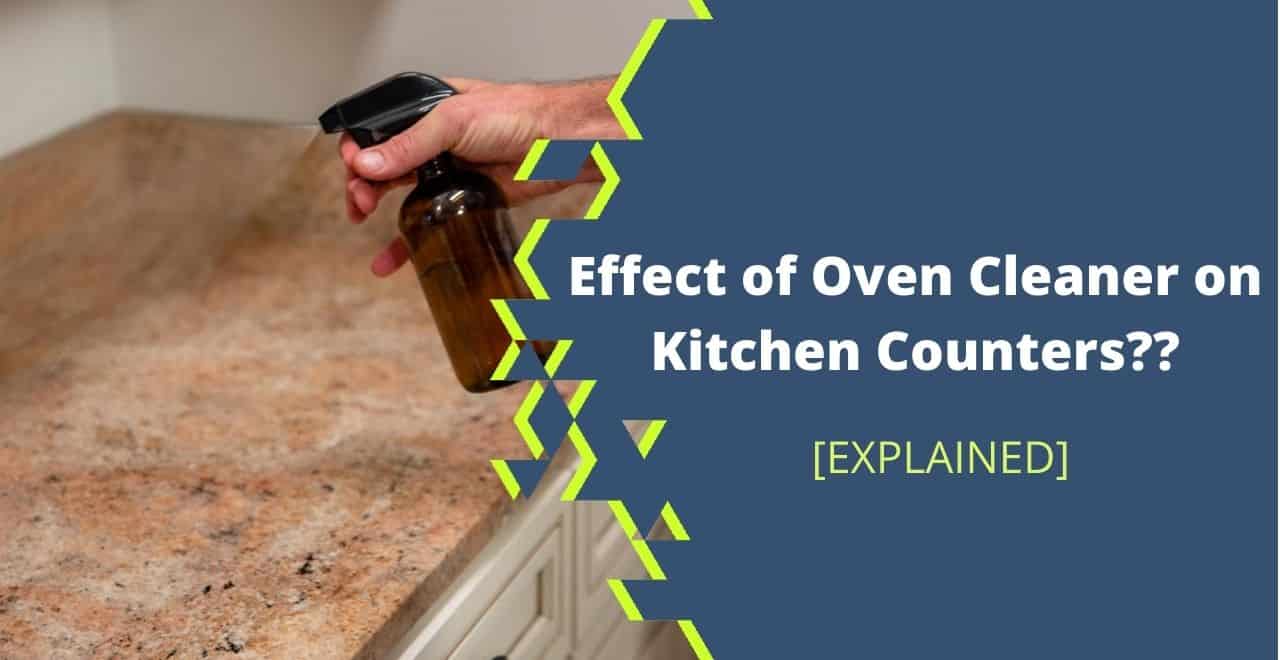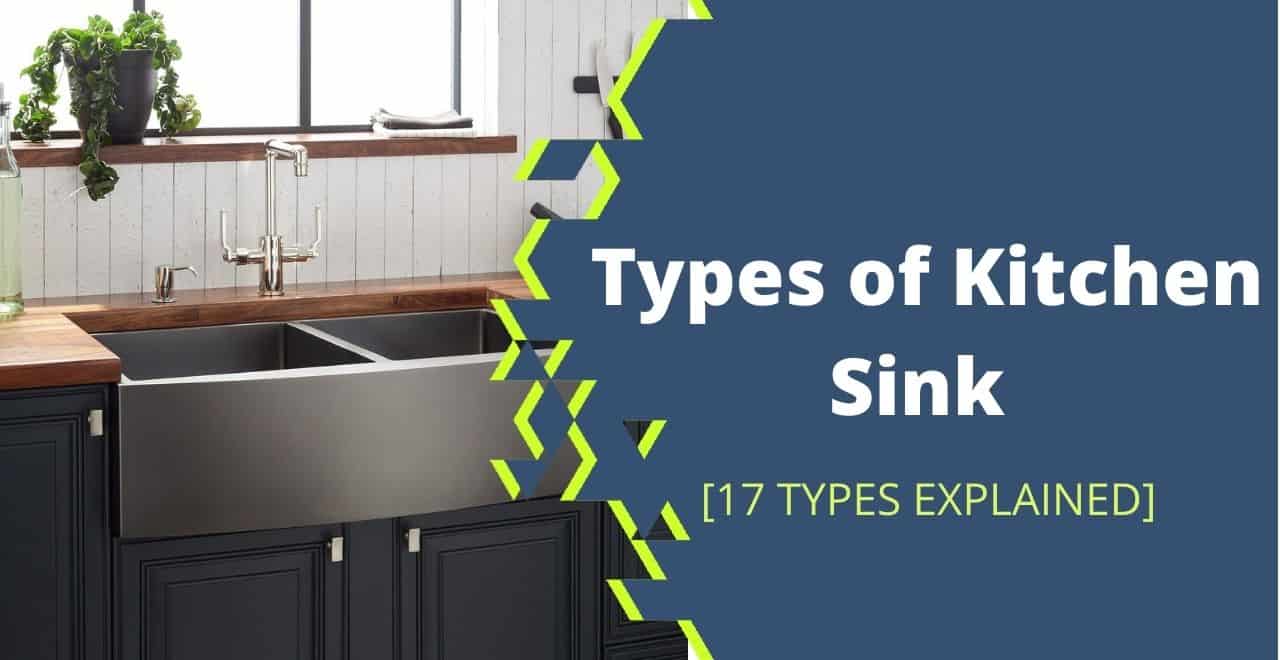Quartzite countertops have been gaining much popularity in recent years. This is even as statistics show that kitchen countertops lead the list of kitchen features many Americans have upgraded.
According to the statistics, 91 percent of homeowners replaced their kitchen countertops between 2021 and 20022, as shown in the graph below.
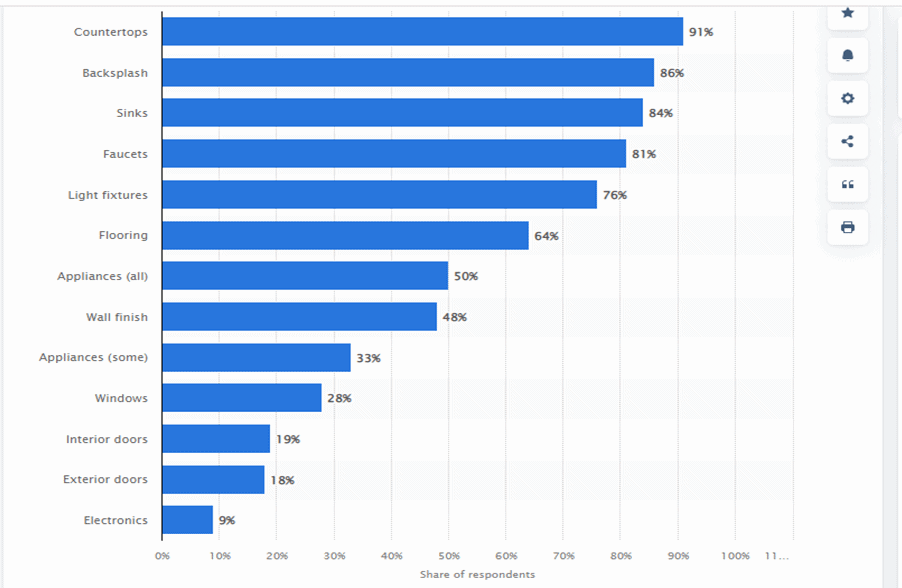
But even as Quartzite Counters grow in popularity, there’s a need to know how to take care of them. I have dedicated this article to show you how to take good care of your countertop so that it lasts for many years. Read on.
JUMP TO: QUARTZITE COUNTERTOPS MAINTENANCE | TYPES OF QUARTZITE COUNTERTOP | REMOVING STAINS FROM COUNTERTOPS |
What are Quartzite Countertops?
Unlike Quartz countertops which are engineered stones, quartzite is a metamorphic rock whose occurrence is due to sandstone exposure to high pressure. This stone features a glass appearance, more or less like marble.
This attractive appearance has made it highly popular as a countertop material. Experts mine the natural stones and cut them to produce an aesthetic appeal to make countertops.
PROS
- Highly durable
- Low maintenance
- Are Versatile
- Are attractive
- UV resistant
- Have an appearance of marble
CONS
- Prone to scratches
- Relatively expensive
- They are porous
- Challenging to install
Ways of caring For Quartzite Countertops
Wouldn’t you like to see your Quartzite countertop lasting for the longest time possible?
I believe so; then, good care and maintenance are mandatory.
The following tips will come in handy:
- Desist from placing sharp-edged items on the counters to avoid scratches; use a cutting board instead.
- Wipe away immediately any liquid that spills on the countertop. Some drinks, such as coffee and wine, have compounds that can affect the color of your Quartzite countertop.
- When wiping your countertop, begin with a soft, damp cloth, then finish with a dry one.
- Frequently polish the countertop using a chamois cloth
Caution: Never use acidic solutions on your countertops; they can cause damage
Types of Quartzite Countertops
Leathered Quartzite Countertops
As the design world keeps on evolving, newer styles are coming up. Leathered quartzite countertops are among the latest types in the market.
This style features a soft sheen. However, the sheen is lesser than that of polished granite but has a textured appearance.
What I love most about this design is that the leathering brings out the characteristics of the stone in a glamorous way.
Moreover, unlike a polished surface, it doesn’t reflect light.
But that’s not all,
Many homeowners are turning to leathered countertops because of their laidback ambiance. Polished surfaces imbue a feeling of formality; however, leathered ones permeate your interior with sophistication and luxury.
Taj Mahal Quartzite Countertops
Taj Mahal quartzite countertops are among the most expensive crown jewels in America. They have a high price of roughly $220 per square foot.
Although this stone comes from Brazil, it derives its name from India’s great monument, “The Taj Mahal.”
Taj mahal quartzite replicates the appearance of marble but with the durability and hardness of granite. Overall, it’s a light-colored countertop that works well in neutral-toned and warm kitchens.
What’s more, it’s a hard and dense stone that will last for long in your kitchen.
Other outstanding features are the subtle gold veins and the soft white background.
Honed Quartzite Countertops
Honed quartzite countertops feature a perfectly smooth surface. They are soft quartzite, more casual, and have an easy-going feel.
They are excellent for use in:
- bathroom flooring
- shower walls
- kitchen
These counters are resistant to UV fading and will not need special cleaning chemicals. Moreover, they can resist scuffs or scratches.
Again,
If you are looking for a relatively cheaper quartzite countertop, this countertop fits the bill well.
Cleaning Quartzite Countertops
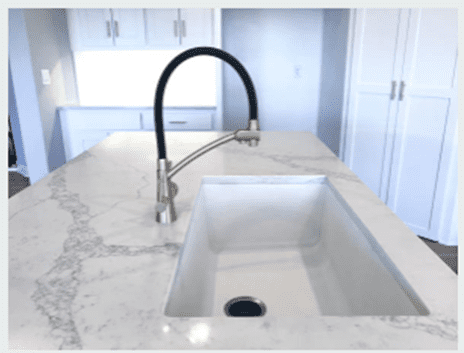
Cleaning quartzite countertops is easy, especially if their surfaces have proper sealing.
Well, when you clean quartzite countertops correctly, they remain looking appealing for a long.
Important Note: Quartzite is low-maintenance and only requires you to put basic precautions in place.
How to Clean Quartzite Countertops?
Properly sealed surfaces are not vulnerable to stains. Mild soap and water will be sufficient for cleaning. However, avoid using bleach, ammonia, or acidic cleaners on the surface.
A good cloth, sponge, or micro cloth will clean effectively.
You can do the cleaning of quartzite countertops even as you use the countertops or make it part of your cleaning routine.
Keep in mind,
Ensure that neither your cleaning products nor any spills have acid; however, clean as quickly as possible if spills occur.
These include:
- Lemon juice
- Orange juice
- Vinegar
- Wine
Sealants can still handle acid stains. However, with time, acids reduce the effectiveness of the sealant.
Caution: If cleaning using a sponge, keep in mind that it can scratch the surface. Consequently, it would be best if you were keen.
Best Cleaning Products for Quartzite Countertops
Marblelife Granite Countertop Cleaner
It’s an eco-friendly natural stone countertop cleaner. This stone cleaner has a light scent and is free of harsh chemicals.
Thanks to its unique blend of patented chemicals, it will effectively remove all oils, adhesives, and food particles.
Method Daily Granite Cleaner
It’s a plant-based countertop cleaner that will effectively clean, polish, and shine your quartzite countertop.
That’s not all,
This cleaner has a sweet scent and allows you to naturally clean oil, food residue, or even adhesives.
And it’s easy to use,
Just spray it on the countertop surface, wipe it down with a paper towel, and then buff it with a dry, soft cloth.
Stone Care Granite Stone Cleaner
Here is a solution that’s suitable for use on food surfaces. It leaves no residue and offers protection against dulling and staining.
Sealing Quartzite Countertops
Sealing is the first step to taking care of your quartzite countertop. The kind of sealer used on your countertop determines the maintenance requirements.
Please take, if you leave the quartzite pores unsealed, they can suck in liquids or moisture, leading to stains.
The porosity in the quartzite depends on the metamorphosis of the natural stones. Less the metamorphosis more porous is quartzite formed and vice-versa.
You can opt for the common sealant or the higher-grade ones. However, if you use the common sealant, you must perform yearly applications.
Important Note: The clearest sign that it’s time to apply a sealant is when the stone surface begins to grow darker around the sink area.
How Often Do You Have to Seal Quartzite Countertops?
Most fabricators will let you know when to apply a sealant in most cases. This is because they usually use it before installation.
Generally, it would be best to seal your quartzite countertops once every ten years.
If you are using common sealants, the rule of thumb is to apply sealant once a year.
How to Seal Quartzite Countertops?
The first step is to clean the countertop and dry it thoroughly.
If you are using the common sealant, the process is simple. You can even do it yourself.
Spray and wipe the sealant, then leave it to dry.
Tip: Go through the manufacturer’s instructions on the manual carefully to get a clear idea of how to go about the application.
But also,
Remember to ensure enough ventilation since sealants are strong chemical products.
Allow the sealant some cure time, as the manual advised, before returning to using your countertop. Sufficient cure time is essential in ensuring there isn’t food contamination.
However, if you are using a higher-grade sealant, you may require seeking the services of a specialist.
What are the Best Sealers for Quartzite
The market is flooded with various sealants. However, some of the best include:
- SimpleCoat sealer
- Stone Care sealer
- Trinova sealer
- DuPont StoneTech Professional Bullet Proof
- Aqua Mix Sealer Choice Gold
- StoneTech BulletProof Sealer
- Miracle Sealants
- Aqua Mix Sealer and Coating Remover
Removing Stains from Quartzite Countertops
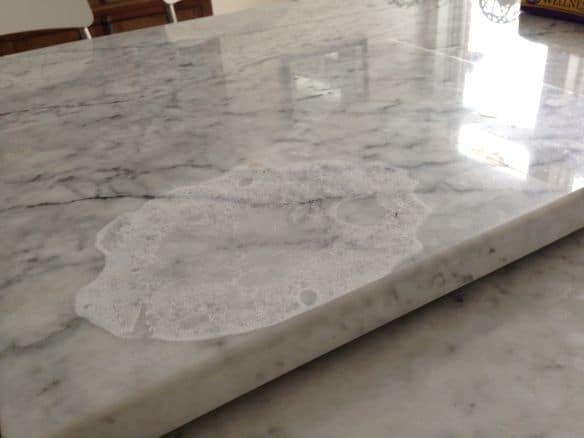
Quartzite is a stain-resistant stone. However, this remains so only if you wipe any spills promptly with a cloth or paper towel.
Leaving any spillage on the surface for long gives it room to soak in. if this happens, your countertop will stain.
If this happens, follow the following steps to remedy the situation.
How Do You Get Stains Out of Quartzite?
The following steps will help you remove any stain from your quartzite countertop.
Step 1: If you can, purchase Mangia Machia Beige. It’s among the best stain remover poultice on the market.
Step 2: Read the directions of usage carefully and apply them accordingly. The thickness should be about a quarter-inch on the stained area. However, to ensure that you have covered the stained area completely, go past it about a quarter inch.
Step 3: Place a clear plastic wrap on top of the poultice and glue the plastic with a blue painter’s tape.
Important Note: Ensure to glue the plastic so well that no air will be able to get inside. Air will interfere with the removal process.
Step 5: Give the poultice about seven days to get the stain out, after which it should have dried. You can allow it a few more days if it hasn’t dried yet. Refrain completely from interfering with it in the first seven days.
Step 6: Once the poultice dries, remove it gently and allow the countertop to dry naturally. You can repeat the process if you are not fully satisfied with the results. However, before applying a second time, ensure to wash the countertop with a good cleaner and mild soap.
What Should You Not Use on Quartzite Countertops?
You want your countertop to last long, don’t you?
If that is the case, avoid using the following products on it because they can cause damage:
- Batteries
- Soft Scrub surface cleaner
- Bleach
- Fingernail polish remover
- Silver polish
- Oven cleaners
- Pumice
- Paint thinner
- Oil-based soaps
- SOS pads
![Granite Vs. Marble Vs. Quartz Countertops [12 Differences+Pros & Cons] Granite Vs. Marble Vs. Quartz Countertops [12 Differences+Pros & Cons]](https://houseadorable.com/wp-content/uploads/2022/03/quartz-marble.jpg)
![What Are Kitchen Sinks Made Of ? [13 Types+Pros & Cons] What Are Kitchen Sinks Made Of ? [13 Types+Pros & Cons]](https://houseadorable.com/wp-content/uploads/2022/01/Sink-MAterial.jpg)
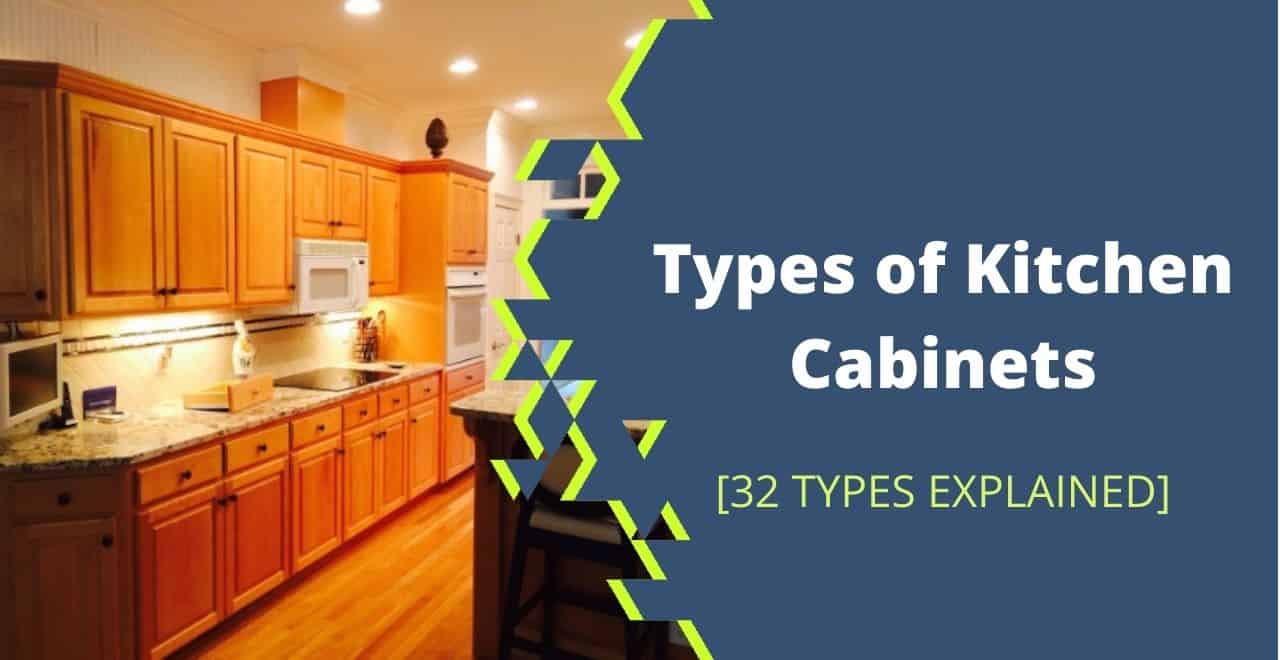
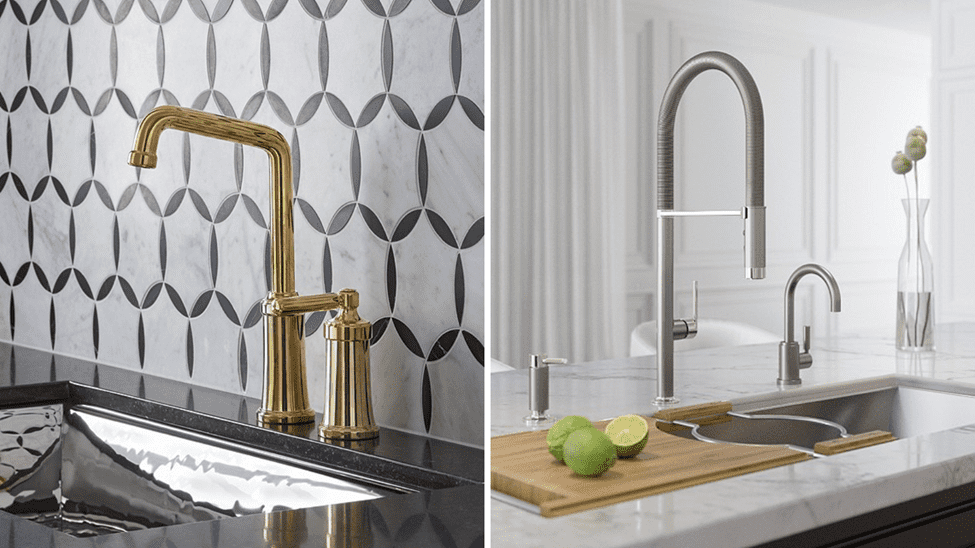
![Bamboo Vs. Wood Cutting Board [9 Differences Explained] Bamboo Vs. Wood Cutting Board [9 Differences Explained]](https://houseadorable.com/wp-content/uploads/2023/01/cutting-board.jpg)

